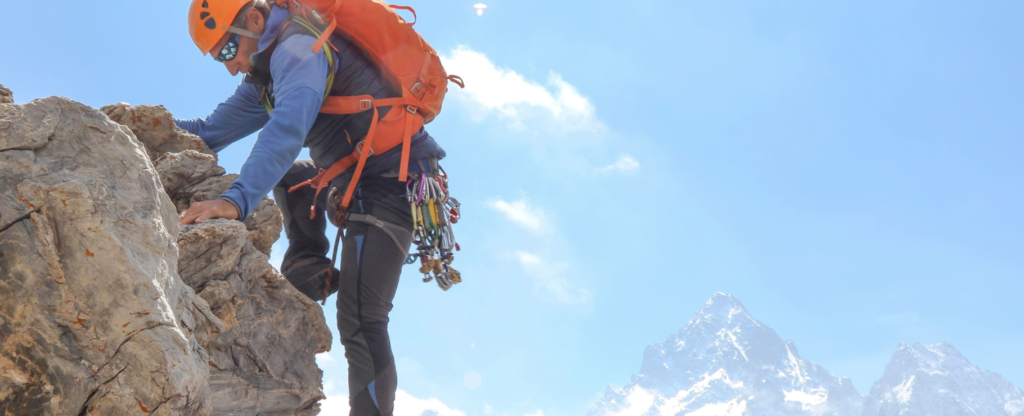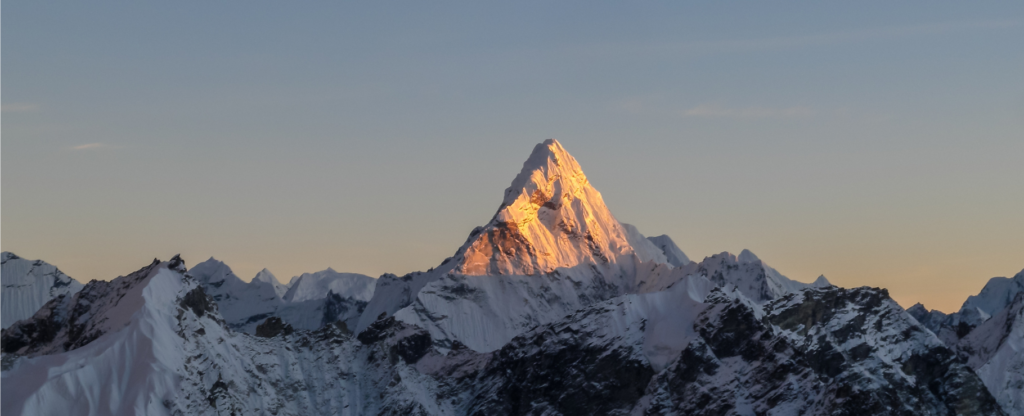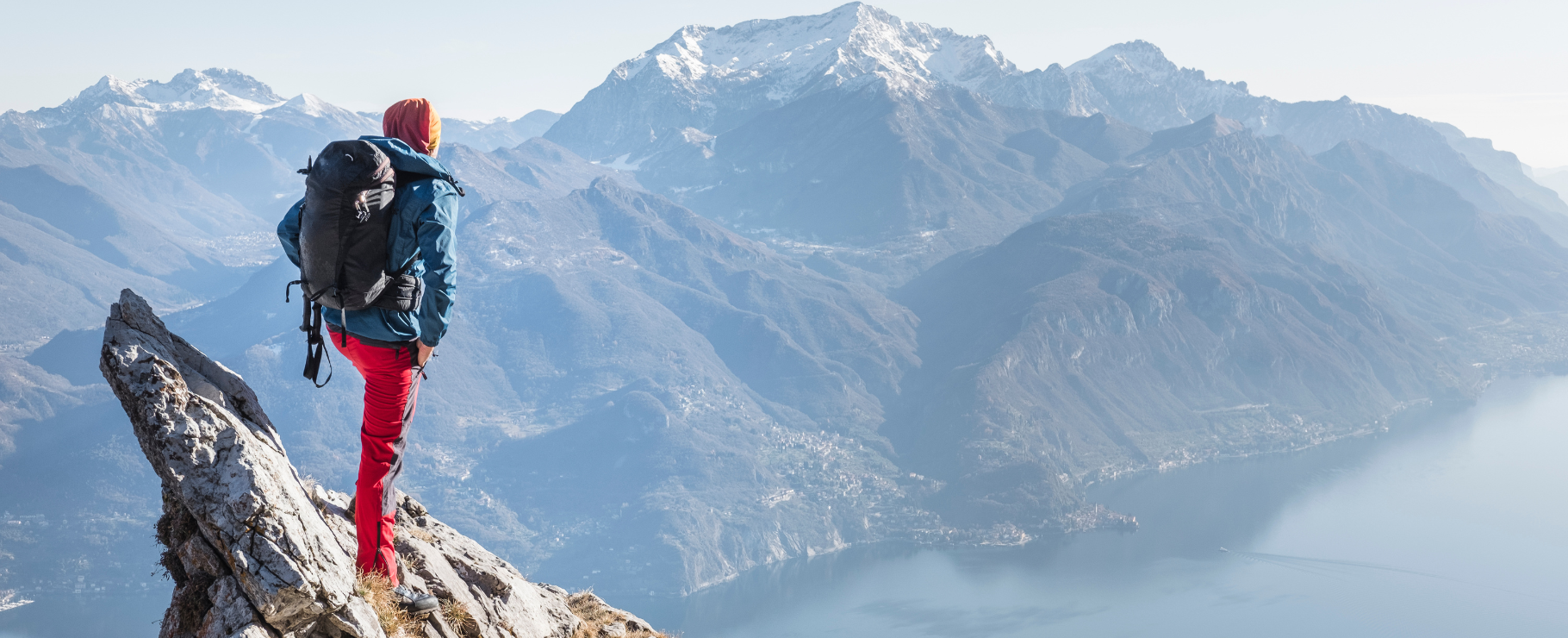Home » How to prepare physically and mentally for a high mountain expedition
How to prepare physically and mentally for a high mountain expedition
Everything you should know to prepare for a high mountain expedition
A high mountain expedition is a fascinating and challenging adventure, at Top Summits of the World we know this well, but we also know that it requires good physical and mental preparation to face it successfully and safely. It’s not just about reaching the top, but about enjoying the journey and overcoming obstacles that may arise. In this article, we will give you some tips and recommendations so that you can properly prepare for your next high mountain expedition. Do you want to meet them?
What is a high mountain expedition?
But let’s start with what’s important, knowing what a high mountain expedition is and differentiating it from a simple trip to the mountains.
A high mountain expedition is a collective excursion to a peak or place for sporting, scientific or artistic purposes, which involves a high degree of difficulty, risk and commitment. A high mountain expedition can have different objectives, such as opening a new route, exploring unknown territory, conducting a study or simply enjoying nature and sport.
A high mountain expedition differs from an outing or excursion due to the duration, distance, altitude, isolation and complexity it entails. Normally, a high mountain expedition lasts several days or weeks, requires specialized transportation, is carried out at more than 3000 meters above sea level, involves great autonomy and demands a high technical and physical level.

What are the benefits of doing a high mountain expedition?
Going on a high mountain expedition has many benefits for health and well-being, both physical and mental. Some of these benefits are:
- Improves cardiovascular and respiratory capacity, by increasing oxygen consumption and adaptation to hypoxia (lack of oxygen).
Strengthens muscles, bones and joints, by supporting loads and resisting prolonged efforts.- Burns calories and helps maintain a healthy weightby increasing basal metabolism and energy expenditure.
- Reduces stress and anxiety by releasing endorphins and serotonin, hormones related to pleasure and well-being.
- Boosts self-esteem and self-confidence, by overcoming challenges and achieving goals.
- It promotes camaraderie and solidarity, by sharing experiences and supporting each other.
- Stimulates creativity and learning, discovering new places, cultures and knowledge.
What risks does a high mountain expedition involve?
Going on a high mountain expedition also involves certain risks that must be taken into account and prevented, such as:
- Altitude sickness or acute mountain sickness (AMS), which is caused by a lack of adaptation to low atmospheric pressure and a decrease in available oxygen. Symptoms may include headache, nausea, vomiting, dizziness, fatigue, insomnia, or loss of appetite. In severe cases, it can cause pulmonary or cerebral edema, which can be fatal.
- Hypothermia or dangerous drop in body temperature below 35ºC. Symptoms may include tremors, confusion, drowsiness, loss of coordination, or unconsciousness. In extreme cases, it can cause cardiorespiratory arrest or death.
- Frostbite or tissue injuries due to prolonged exposure to cold. Symptoms may include numbness, tingling, paleness, or cyanosis (bluish color) in the affected areas. In severe cases, it can cause necrosis (cell death) or amputation.
- Avalanches or massive snowfalls that can drag people or bury them. The factors that can trigger an avalanche are weather conditions (wind, rain, snow), terrain (slope, orientation) and human activity (noise, weight).
- Accidents or injuries due to falls, blows, cuts or bites. Accidents can be caused by terrain (rocks, ice, cracks), equipment (ropes, crampons, ice axes), or animals (bears, wolves, snakes).

How do I prepare physically for a high mountain expedition?
To physically prepare for a high mountain expedition, it is necessary to follow a specific training plan that improves endurance, strength, flexibility and coordination. The training plan must be adapted to the level of each person, the objective of the expedition and the time available.
A possible example of a general six-month training plan for a large mountain objective could be as follows:
- First and second month: Back to the gym, begin to establish the foundation for weight training; Add cardio with trail-running and mountain biking.
- Third month: You should see some progress regarding strength and endurance, progress in cardio should be coming. Increase the intensity and duration of training sessions.
- Fourth month: You now feel good and your strength and endurance are solid. Start going out to the mountains on weekends, with slopes and progressive loads. Combine training at altitude with training on the flat.
- Fifth month: You are in top shape and ready for the challenge. He continues to go out to the mountains on weekends, with slopes and high loads. Add specific mountain technique and safety exercises (climbing, rappelling, etc.).
- Sixth month: It is time to refine the details and rest. Reduce the intensity and duration of training sessions. Take light trips to the mountains to maintain your tone. Take care of your diet and hydration.
And mentally?
To mentally prepare for a high mountain expedition, it is necessary to develop a positive attitude, strong motivation and the ability to adapt.
We must keep in mind that it is an important challenge and there are many strategies that can help us achieve it, such as:
- Establish realistic and achievable objectives that adjust to our capabilities and expectations. Goals should be specific, measurable, relevant and time-bound.
- Plan in advance all aspects of the expedition, such as the itinerary, equipment, transportation, accommodation, permits, budget and schedule.
- Find out about the conditions of the place you are going to, such as climate, geography, culture and regulations.
- Train not only the body but also the mind, practicing relaxation, visualization and self-control techniques.
- Seek support from fellow expedition members, sharing experiences, emotions and advice. Choose a united and organized group with the capacity to work led by a coordinator or expedition leader.
- Enjoy the process and the result, valuing the achievements made and learning from the mistakes made.
A high mountain expedition is a unique and unforgettable experience that can bring us many physical and mental benefits. However, it also involves certain risks that must be prevented and minimized. To do this, it is essential to prepare adequately both physically and mentally to face the challenge successfully and safely. We hope that these tips have been useful to you and that you are encouraged to live your own adventure in the mountains.
OUR LATEST PUBLICATIONS

The five summits you can’t miss in Asia
From snow-capped giants to sacred volcanoes: a tour of Asia’s most fascinating peaks Asia is a continent of extreme contrasts. From the vastness of the

The 5 summits you can’t miss in South America
The most impressive mountains on the continent that every mountaineer must conquer South America is a paradise for mountaineering enthusiasts, with some of the most

The 5 summits you can’t miss in Europe
Rediscovering Europe from its most emblematic peaks At Top Summits of the World our mission is to climb the highest mountains in each country and



